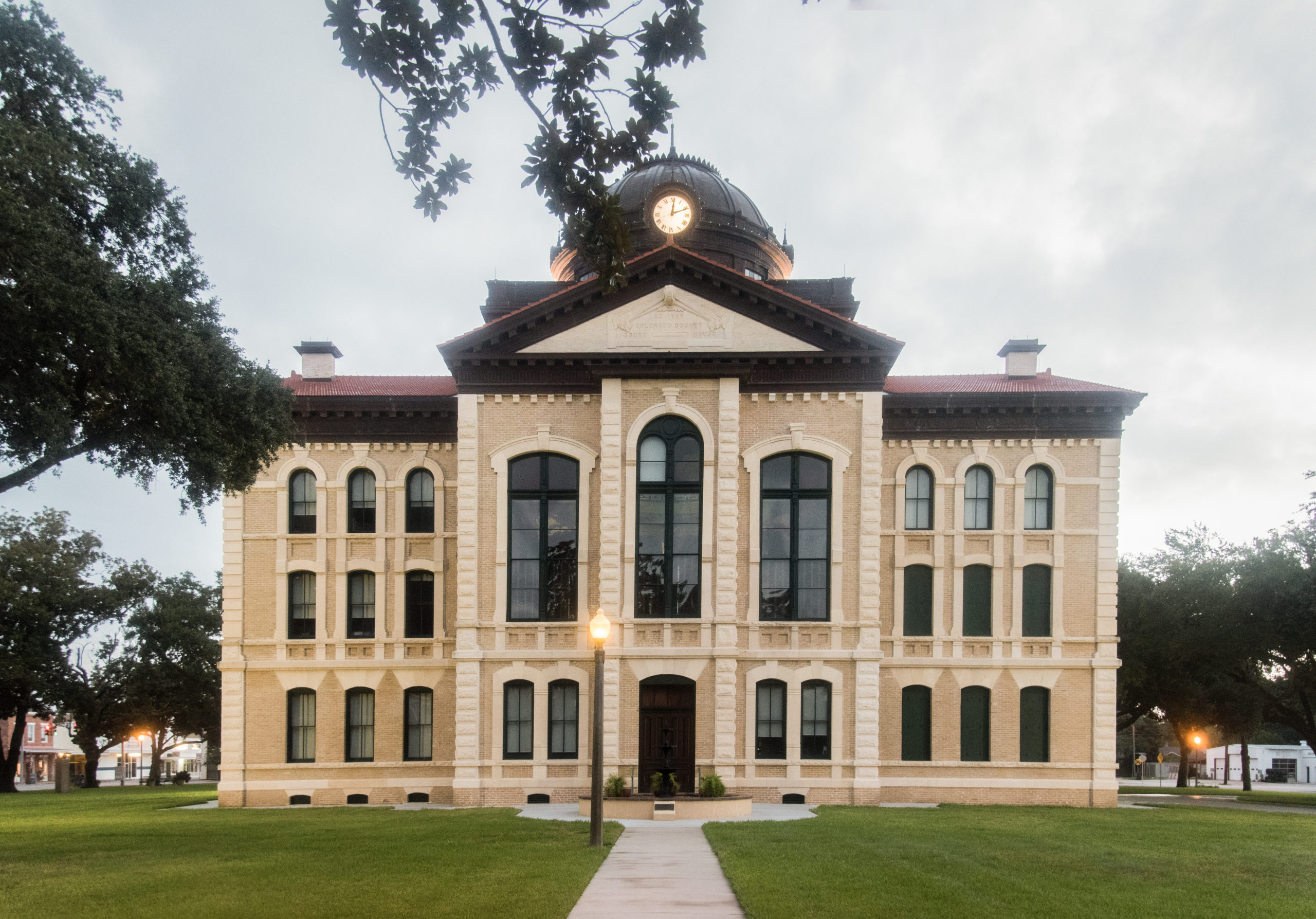County Seat: Columbus * County Population: 20,874 (2010 Census)
 The 1891 Colorado County Courthouse was designed by noted Texas architect Eugene Heiner in a Renaissance Revival style and is a National Register Property.
The 1891 Colorado County Courthouse was designed by noted Texas architect Eugene Heiner in a Renaissance Revival style and is a National Register Property.
In 1909, a hurricane destroyed the original tower and severely damaged the structure. The building was extensively repaired, and a new Classical Revival copper dome and tile roof replaced the original tower. Subsequent painting of the brick and construction of one-story additions in the 1950s altered the building’s unique appearance.
In 2006, after a portion of the ornamental plaster ceiling collapsed in the district courtroom, the county launched a multi-phased effort to completely restore the building. Volz O’Connell Hutson Inc. served as architect, and Drymalla Construction Co. served as construction manager for all phases of the work, which totaled $10 million. Funding was provided from local sources and grants from the Texas Historical Commission.
The exterior restoration included removal of two additions, stone and brick restoration, window restoration, and repair of the historic cast iron and sheet metal porches. Specific challenges included careful removal of cementitious paint from the historic brick, and reproduction of missing elements based on available historic photographs.
The interior restoration included many building code, life safety, and accessibility improvements to the courthouse. The 18-month construction project involved structural repairs, plaster repair and replacement, restoration of original woodwork and finishes, and restoration of historic furnishings, vault doors, and antique safes. The 27-foot diameter, stained glass dome that graces the district courtroom was fully restored and cleaned. The county rededicated its historic courthouse in 2014.
Colorado County, located some 60 miles above the Gulf of Mexico, was named for the Colorado River, which runs through the county. The county seat of Columbus is in reference to Columbus, Ohio, a location dear to the heart of an early settler.
The county seat is one of the oldest settlements in Central Texas, established by Stephen F. Austin and his “Old 300.”
Historic buildings include the 1886 Stafford Opera House, a Second Empire-style structure that originally housed the Stafford Bank downstairs and a flat-floored opera house upstairs, and the 1891 Brunson Building, first built as a saloon in a Victorian style. The Brunson Building now houses the Live Oak Art Center and the Courtyard Wine Bar. To read about other historic properties, go to
https://bit.ly/2MgEXeF.
The county’s rich, colorful history is celebrated during annual events including the Gedenke! Festival in Weimar, the Prairie Chicken Festival in Eagle
Lake, and the two-day Magnolia Days Festival, which attracts some 4,000-plus visitors every year. The Annual Colorado County Fair in Columbus is over four decades old and includes two days of rodeo events, live music, food booths, carnival rides, and more.
Finally, Colorado County has long been regarded as a hunter’s paradise and is home to Eagle Lake, the Goose Hunting Capital of the World.
Volz O’Connell Hutson Inc. contributed to this article.









